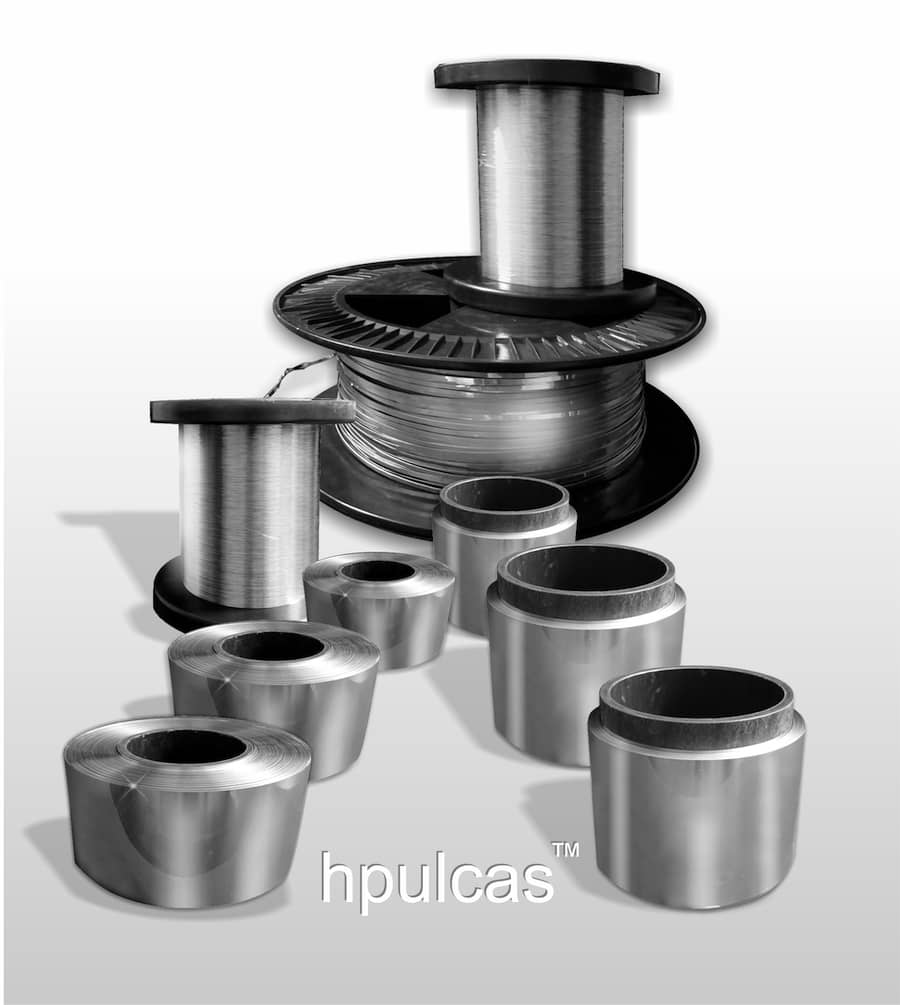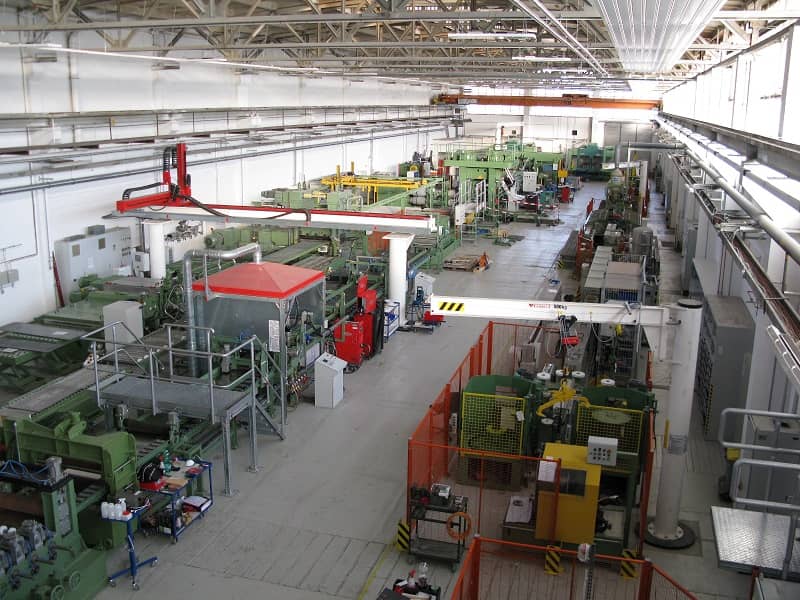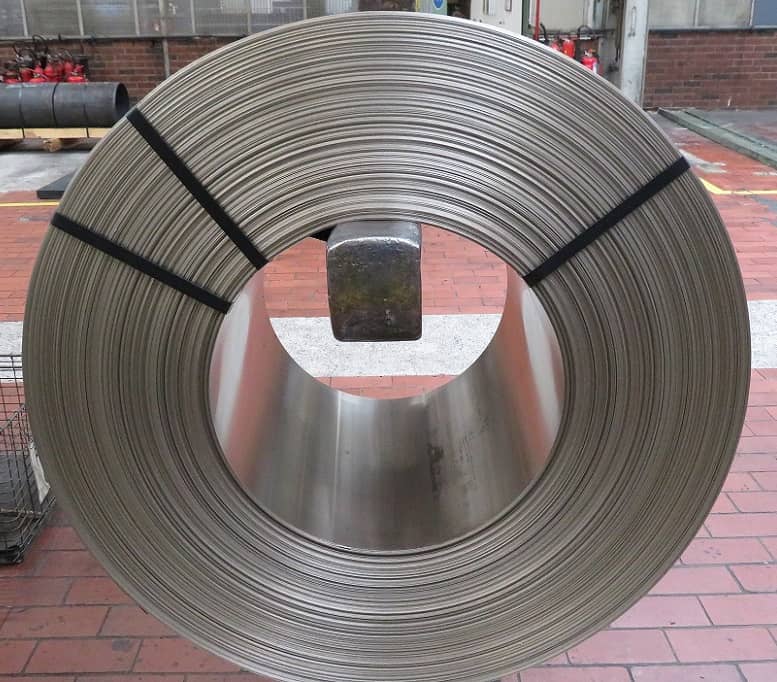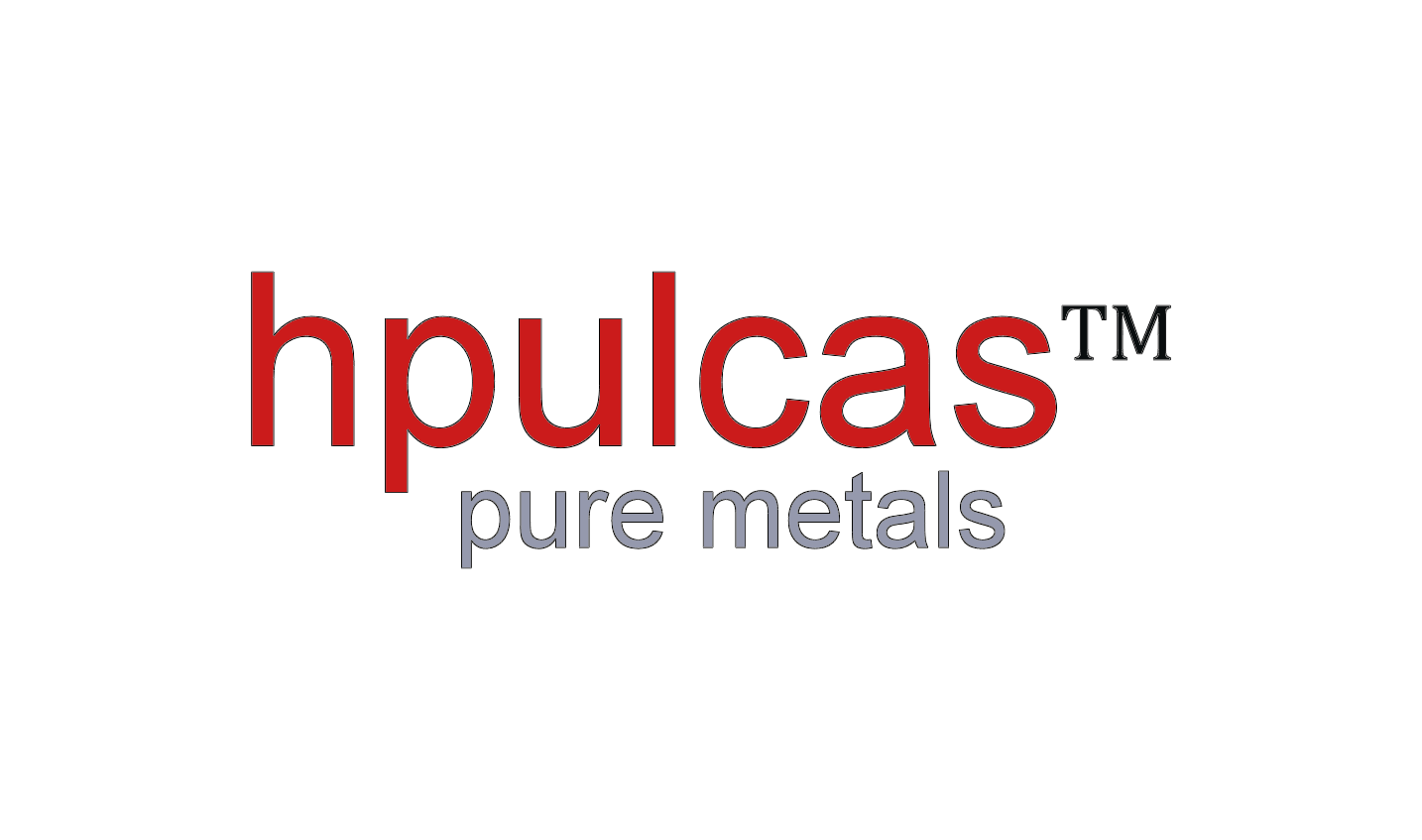High-Purity Nickel for High-Performance Applications
hpulcas GmbH
Many high-performance applications bring about demanding conditions for materials, from high temperatures to high pressures and corrosive environments. Application areas like batteries, chemical plants and refineries, sputtering processes, and laser bonding processes, to name a few, all entail material properties that are not only suitable but also modifiable based on the actual application requirements. In light of this, high-quality material with properties that meet such requirements is essential to ensure functional and reliable products. In this article, we discuss how nickel, in particular high-purity nickel (HPNTM), has become a material of choice for many of these applications, especially with its uniform physical properties, relatively low hardness in annealing condition, the possibility of customising its mechanical properties to meet the application requirements and good thermal and electrical properties.

High-purity nickel is nickel with at least 99.98% nickel composition. Such a purity allows for exceptional properties, especially as compared to grades of lesser purity. One prominent feature is the major drop in its recrystallisation temperature as compared to standard-purity nickel grades, resulting in new possibilities of products and applications, e.g. using Ni as a material for clad combination with low melting metals.
Based on market statistics, the global market of high purity nickel has been on a steady rise over the last decade and is expected to continue its growth over the next years, especially with more and more key players adopting new strategies.
In this article, we will discuss:
- Properties of high-purity nickel
- Applications of high-purity nickel
- High-purity nickel for the production of clad metals
- HPN in the battery industry
- HPN in the electronics industry
- HPN in chemical plants and refineries
- HPN as brazing material
- Laser bonding of high-purity-nickel ribbon
- HPN as sputtering target material
- HPN in chlor-alkali production
- How to find high-purity nickel
Properties of high-purity nickel
With challenging applications requiring unique properties, HPNTM has stood out with its distinctive mechanical, chemical, thermal, and electrical properties, enabling its reliable use in such application areas.
For example, HPNTM possesses the lowest hardness levels of any nickel grade due to its low carbon content (0.002%). This allows for the production of highly thin, homogeneous, free-standing foils and clad layers with no pores. Its high formability gives rise to high rates of deformation without intermediate annealing, as strips can be rolled and reduced by more than 98%.
Furthermore, HPNTM’s key feature of high purity (99.98% Ni) and extremely low content of trace elements guarantees reproducible properties, which is a crucial feature for bimetals and sandwiched braze metals. Table 1 below shows a list of HPNTM’s many properties and benefits upon usage.
Table 1. Properties and benefits of high-purity nickel
|
Properties |
Benefits |
|
High purity |
- Uniform and reproducible physical properties - Can be used in temperature sensor and control - Impedes corrosion, especially at high temperatures |
|
low C-content of only 20 ppm results in the lowest hardness of any nickel grade (down to 57 HV10) allows to produce very thin, homogeneous, pore-free foils with a thickness of a few μm |
Allows for: - Clad combinations with soft metals (e.g. a thick aluminium clad with thin nickel layer) - Welding of bond wire by ultrasound - Low gauge layers in a clad composite acting as diffusion barriers - Foils as thin as 4 μm in thickness |
|
No non-metallic inclusions and trace elements |
Improves: - Adhesive strength in “green” clad composites - Formability - High-temperature resistance - Corrosion resistance |
|
Increased electrical (20%) and thermal conductivity |
Valuable for: - Current conduction in high-temperature environments - Clad 3-layer thermobimetals with nickel interlayer |
|
Lower recrystallisation temperature (350 – 450 °C) than nickel of standard purity (690 – 720 °C) |
Allows for hindered: - Recrystallisation annealing for nickel clad with low melting metals (Al, Mg and Sn, Pb and Zn alloys) - Bell annealing (Trecrystallisation < Tsticking) - Slower diffusion at the bond interface |
|
Diffusion barrier |
Allows for: - Low interlayer diffusion - Only thin layers made of brittle intermetallic phases originate |
Applications of high-purity nickel
HPNTM’s excellent physical and chemical properties have inspired its use in high-performance applications, especially those with challenging conditions like high temperatures and corrosive environments. Hpulcas GmbH, a trusted supplier of high-purity nickel since 2011, has developed a novel fabrication process of HPNTM with a purity of 99.98%. Some of HPNTM’s most common uses include the production of clad metals, battery applications, industrial applications in chemical plants and refineries, brazing, Ni ribbon/flat wire for laser bonding, sputter target, and other applications like electroforming and electroplating.

High purity nickel (HPNTM) for the production of clad metals
Due to its high purity and special properties, HPNTM is an interesting material for clad composite strips (see table 1 above). HPNTM is practically free from trace elements. A homogeneous purity of Ni ≥ 99.98% ensures reproducible properties independent of production lots. This is an important property for bimetals and sandwiched braze metals. Furthermore, low recrystallisation temperature is necessary if nickel is clad to a metal with a low melting point. Aluminium can be clad to nickel, and the compound can be recrystallised by annealing without risking the melting of the aluminium layer (which would occur at a temperature of 660 °C). In addition, HPNTM can be used to produce various metal combinations as Ni/Cu and Ni/SS.
HPNTM can be also applied as an interlayer diffusion barrier during bonding of dissimilar materials, which prevents the bonded materials from diffusing at the interface. Some examples of using Ni as an interlayer diffusion barrier are in dissimilar joining of Cu/Sn, Cu/Zn, Ti/Fe, Steel/Al and stainless steel/Cu.
HPNTM in the battery industry
Battery applications are highly demanding areas of usage, with rigorous standards and conditions. They require a wettable surface for the active material to adhere securely to the substrate and a material with high purity and high conductivity.
Hpulcas ultrathin nickel’s high purity, high conductivity (20% higher than that of standard pure Ni 200), and high formability allow shaping it into thin foil, which fit perfectly in battery applications. HPNTM can be used as electrode substrates for batteries and microbatteries. In addition, HPNTM foil can be applied as a current collector or substrate in various Li-ion batteries.
Furthermore, as previously mentioned (see the table above), nickel can be clad with aluminium by roll bonding to produce NiAl laminate composites. With HPNTM’s low recrystallisation temperature, the NiAl clad composite can be recrystallisation annealed, especially at low temperatures, through which only thin intermetallic compounds are formed. Consequently, proper bonding strength can be obtained for the composite, rendering it suitable for subsequent deformation, such as punching, without delamination. NiAl can also be used as casing for high voltage coin cells, terminal contacts for batteries in aluminium cans and soldering/cell contacting.
HPNTM in the electronics industry
HPNTM can be used as a substrate in electronic components, such as thin-film capacitors, due to its high purity, thermal stability, and chemical stability. Thin foil is commonly in demand, and it can be perfectly produced as a result of the high formability and the absence of non-metallic inclusions of HPNTM. Currently, thin foil of HPNTM with a thickness of ≥ 4 µm can be produced. In hpulcas, HPNTM with a very high degree of smoothness for the surface of strip and foil can be manufactured. Measurements with an Olympus confocal microscope OLS 4100 showed a Ra of about 20 nm. Such smooth surfaces are beneficial for various applications such as YBCO, BaTiO3 and PZT coatings. Thermal annealing and heavy cold rolling are required to induce recrystallisation with strong cubic texture, which is necessary for thin-coated conductor applications. To realise this, hpulcas has built up both suitable rolling and annealing facilities. In addition, low thickness tolerance can also be achieved for HPNTM. Hpulcas operates a reversing Bühler mill with 2 Vollmer thickness measurement devices. Thickness tolerances < 2 μm can be achieved.
HPNTM in chemical plants and refineries
Gaskets in chemical plants and refineries are highly important parts despite being relatively inexpensive and small in size. They undergo challenging conditions that require them to be resistant to temperature and corrosion with high compressive strength. Selecting the right material for such gaskets is crucial due to the tight connections in order to meet the environmental requirements of clean air protection. With that in mind, the material’s hardness or softness determines the gasket’s sealing characteristics. As standard nickel grades exhibit high levels of hardness, such a property renders them less likely to be utilised as gaskets since that necessitates very strong compressive forces to ensure the sealing is properly and tightly done. On the other hand, HPNTM’s characteristic softness helps overcome the limitations of high hardness while maintaining nickel’s toughness. With a Vickers hardness of 57 HV10, hpulcas nickel is the softest nickel produced in an industrial process in the world.
HPNTM as brazing material
Brazing is the joining of metals via melting and adding a filler metal of lower melting point into the joint. HPNTM is a suitable material for brazing as it is used as a spacer to deflect the compressive stress caused by the shrinking of the combined metals upon cooling after brazing. Its high ductility and strength render it advantageous over the conventionally used copper. Due to its high purity, high corrosion resistance can be achieved, especially at high temperature. HPNTM contains an extremely low carbon of only ≤ 20 ppm with the absence of non-metallic inclusions and trace elements. This allows for the production of pore-free homogenous foil with thickness down to 4 µm as well as thin clad layers. HPNTM exhibits low hardness and low yield strength in annealed condition, which results in eliminating the interfacial porosity at bonding temperature. HPNTM is also utilised as a diffusion barrier, which prevents the formation of brittle intermetallic phases. Another benefit for applying HPNTM as a brazing material is its resistance for high temperature; thus, it is an essential brazing material for parts subjected to high-temperature service. Nickel takes the form of an expanded metal, a woven net, a pure nickel foil or clad metal. Despite its limitations of high melting point, reactivity with trace elements in the base metal and with other brazing elements, pure nickel remains an effective brazing material due to its high mechanical and thermal properties.
Laser bonding of high-purity-nickel ribbon
Laser bonding is a process that utilises a modified ultrasonic wire bonder to perform ribbon bonding. HPNTM ribbon can be used in laser bonding due to its high degree of purity, its cleanliness (no non-metallic inclusions), extremely low levels of carbon and sulphur, low electrical resistivity and low thermal conductivity, to name a few. In particular, hpulcas high-purity nickel’s low level of impurities has given rise to uniform and reproducible bonds, which is essential for mass automated bonding. It also exhibits excellent formability, high oxidation resistance, and low softening temperature, which make it a favourable material in such application areas. Compared to copper and aluminium, nickel’s lower thermal conductivity minimises the welding energy as heat takes longer to dissipate. Laser micro-welding is applied for contacting batteries, battery management devices, and modules for high-power electronics. HPNTM ribbon is produced in hpulcas with dimensions of 0,1mm x 1 mm.
HPNTM as sputtering target material
As nickel is a ferromagnetic material, it is mainly used in sputtering processes as a magnetic thin film to form on a substrate, a barrier and solder layer to prevent corrosion and diffusion, and as an adhesion layer between ceramic and metallic materials. The quality of such thin films is typically based on the level of purity of the sputtering target, its grain size, density, permeability, and crystallographic orientation.
Hpulcas provides sputtering targets made from ≥ 99.98% nickel that come in different shapes (plate, disc, slug, wire clippings, pellets) and sizes (hot rolled: up to 2500x600x6 mm; thick plates: up to 10 mm thickness). In addition, thinner sputtering target 1 mm down to foil of 10 µm can be produced. With their new technology, hpulcas produce high-quality vacuum sputtering targets by hot rolling from high purity cathode plates, resulting in highly dense metal parts with uniform grain distribution.
HPNTM in chlor-alkali production
Soda and potassium hydroxide are strongly basic. They corrode most metals; the corrosion products contaminate the alkalis. For certain purposes, however, the alkalis must be free from trace elements. This is important when using alkalis for the production of bleaching agents, synthetic fibres, pharmaceuticals and foodstuff. The material that withstands corrosive alkalis best is pure nickel. HPNTM provides the following advantages over the pure Ni 200 or Ni 201:
- Maintaining the purity of the end product
- The lower carbon content in HPNTM is particularly important at high operating temperatures, namely from 315 °C, resulting in the formation of graphite.
- Avoidance of intergranular corrosion in order to maintain the ductility of the construction materials even with high alkali concentrations and high temperatures
- The absence of trace elements, and thus, avoiding the preferred corrosion of trace elements. Upon annealing during the production process of semi-finished products, many of the trace elements contained in nickel segregate to the surface. The concentration of trace elements on the surface is, therefore, higher than the indication of the content of trace elements of a certain nickel quality suggests. When used in chlor-alkali production, the segregated trace elements can cause surface corrosion; the corrosion products can contaminate alkalis.

How to find high-purity nickel
With its high purity and excellent material properties, HPNTM is a demanded material in an increasing number of application areas. Yet, finding the right HPNTM material is crucial to achieving and maintaining a high-quality performance. Engineers and product developers can now easily find, explore, and buy high-purity nickel due to material suppliers like hpulcas.
Hpulcas has been a reliable supplier of high-purity nickel for a decade now, and it has developed and implemented a new process to fabricate a high-purity nickel grade with ≥ 99.98% in the forms of plate, strip, foil, wire and flat wire.
This is the purest nickel commercially available. While the properties meet the requirements for the grade Ni 270, the strip is not made from powder, but rather, manufactured by a proprietary process directly from cathode plates.
The grade of purity is measured by GDMS and carrier hot gas extraction covering 72 trace elements. Measuring limits are treated as impurity content. If this (HPNTM) nickel grade would be analysed by a less detailed analytical method, analysed for fewer elements or measuring limits be ignored, the degree of purity would even increase.
Hpulcas have listed their portfolio of materials here on Matmatch to make sure engineers, product developers, and researchers can explore and acquire their desired materials easily and can reach out to hpulcas directly.
Visit the hpulcas supplier page for more information on their materials and to get in direct contact with them.
Artículo de <a href=/suppliers/hpul-hpulcas-gmbh> hpulcas GmbH </a>hpulcas GmbH
hpulcas is an acronym for High Purity Ultra Low Carbon and Sulfur.
hpulcas GmbH has developed and implemented a new process to fabricate high purity nickel. The new grade of hpulcas nickel with a purity of 99.98 % meets and surpasses the requirements for Ni 270. The key to the process is the use of high purity cathode plates instead of nickel powder or melt metallurgy. The cathode plates are hot rolled to a uniform 6 mm, levelled, brushed, cut to rectangular format and joined by welding. The strip thus manufactured is then rolled down to the required thickness by cold rolling and interim annealing. The high degree of purity results in special and reproducible properties, which are used in demanding applications ranging from temperature sensors and controls, welding and brazing products, battery and supercapacitor components, diffusion barriers in roll bonded clad metals, contacts and thermobimetals. The products include sheets, strips, foil, coil and wire. A wide range of dimension and mechanical and surface properties can be provided.

